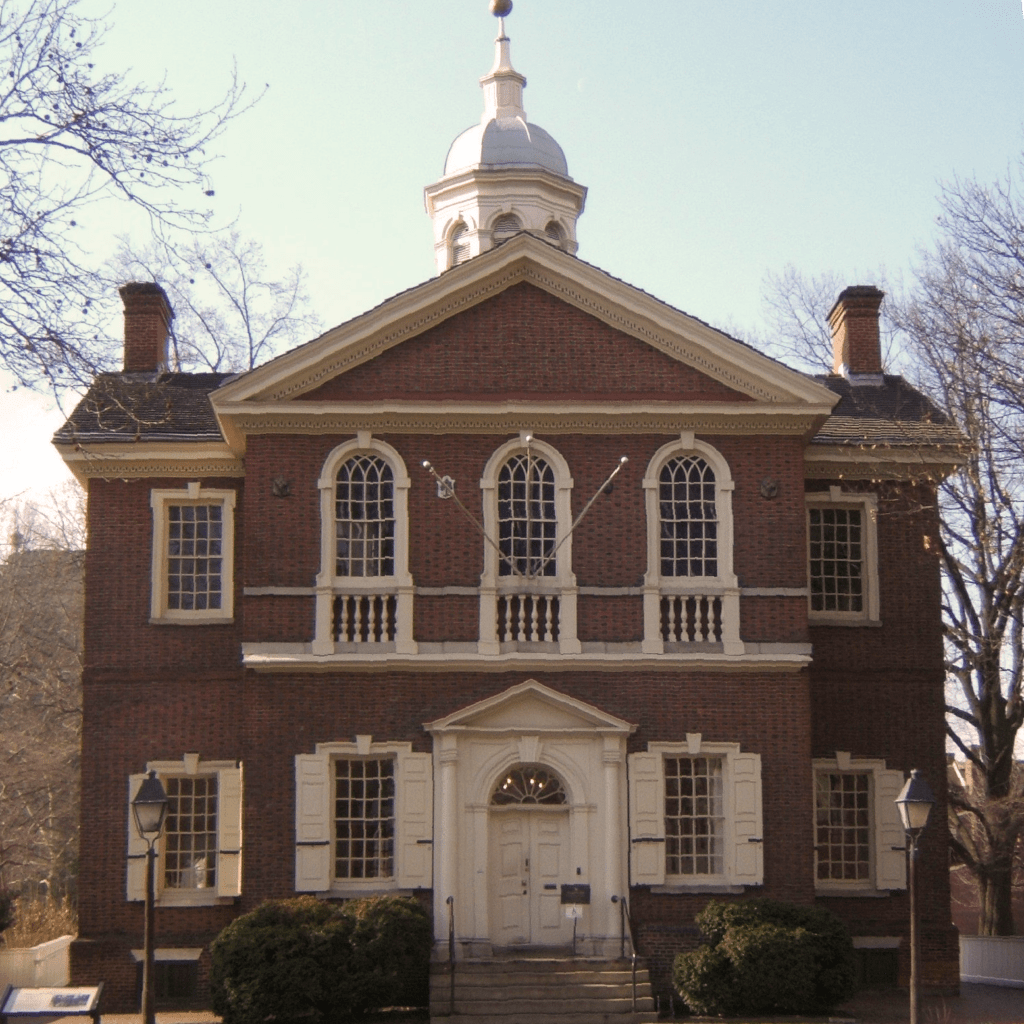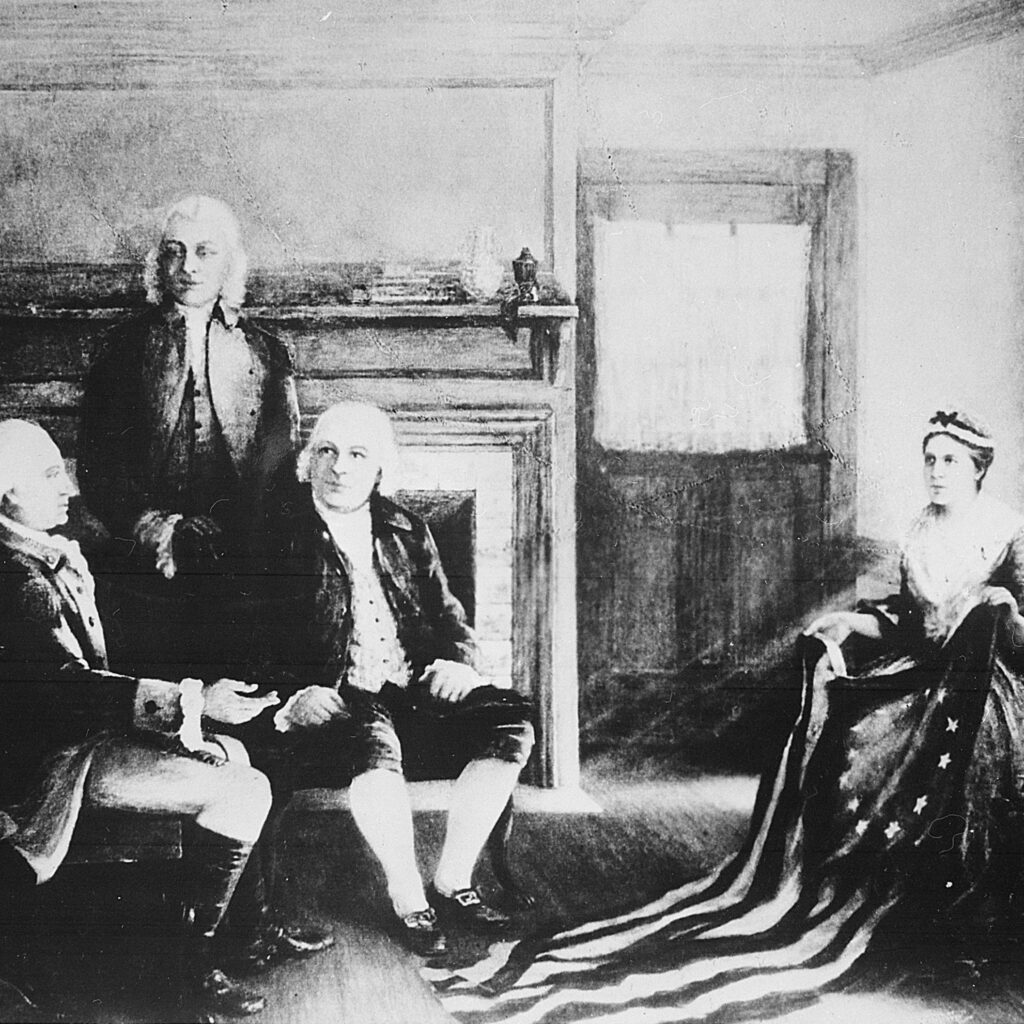The Continental Congress was a legislative body formed by the British colonies in North America in the 18th century. Each colony also had its own representative body. Then, they sent delegates to the Continental Congress. Its key leaders are the Founding Fathers of the USA.
In the 18th century, British America consisted of these colonies:
- Connecticut, Delaware, Georgia, Maryland, Massachusetts, New Hampshire, New Jersey, New York, North Carolina, Pennsylvania, Rhode Island, South Carolina, and Virginia.
Historical Background

During the 1760s and 1770, the British parliament passed a series of laws. For example, the 1764 Sugar Act tried to end sugar smuggling, or the Stamp Act of 1765, which set taxes on all paper documents in America. All these laws infuriated the Americans.
Further, the British also set a tax on tea in 1773. That was the final straw for Americans in Boston. During the famous Boston Tea Party, they threw crates of tea into the sea. To punish Boston, the Brits passed the Intolerable Acts in 1774. This law took away governing rights from Boston. Besides, more British troops came to the city.
In the end, the Intolerable Acts were only a driving force in the chase for independence. That very same year, the colonies agreed to a common approach. Hence, the Continental Congress came to life.
First Continental Congress
The First Continental Congress started in early September and ended in late October in 1774. It took place in Carpenter’s Hall, Philadelphia. Georgia did not take part due to an ongoing war with the Natives. Hence, only twelve states took part.
Altogether, 56 delegates arrived. Most notable was George Washington, John Adams, John Jay, Patrick Henry, or Samuel Adams. On the other hand, Thomas Jefferson and Benjamin Franklin were unable to attend. Peyton Randolph presided over congress.
They sent a letter to British king King George III asking him to repeal the Intolerable Acts. They also started a boycott of British goods. Their primary problem was taxation without representations – paying taxes without the right to govern. Besides, they agreed to meet the following year if nothing was to change.

Second Continental Congress

The Second Continental Congress first met in May 1775. It continued until March 1781. Once again, Philadephia was the primary home of the congress. Yet, sometimes they met elsewhere.
When congress started, the Revolutionary war had already broken out. Thus, the first goal was to choose a leader of the continental armies. In the end, the delegates voted for George Washington after John Adams nominated him.
Equally important was the decision from July 2nd, 1774. Then, congress decided to push for independence. Thomas Jefferson was responsible for drafting the Declaration of Independence.
Finally, on July 4th, 1776, the Second Continental Congress declared independence on the United Kingdom. However, the war did not end for another five years.
As the war went on, the delegates continued to meet. In November 1777, they adopted the Articles of Confederation. They signed the document in 1881. That marked the ned for the congress. Once again, many notable men took part. Besides those of the first congress, Benjamin Franklin and Thomas Jefferson arrived. Later, James Madison also joined. John Hancock and John Jay led the sessions.
Confederation Congress
Also called the Congress of the Confederation, it was the first formal assembly of the young republic. It met from 1781 until 1789. It chose the new flag and helped sign the 1783 Treaty of Paris. Hence, The USA was now officially independent. The first capital of the USA was New York City. In 1782, they adopted the Great Seal of the United States, which is still in use today.
Further, James Madison realized that the Articles of Confederation were a weak document. Thus, a new goal emerged. Philadelphia Convention of 1787 decided that the delegates must create a new constitution. The shape of the state caused fresh disputes. The arguments revolved around the strength and position of the federal government.
In the end, the proposal drafted by James Madison won. Crucial for the adoption was also Alexander Hamilton and John Jay. Along with Madison, they were the authors of The Federalist.

However, there was also a group that did not feel the need for a new constitution. In the end, Elbridge Gerry, George Mason, and Edmund Randolph decided not to sign the constitution. Nevertheless, 39 out of 42 delegates voted in favor of it.
Congress ratified the constitution in June 1788. It came into effect on March 4th, 1789. It marked the end of the Continental Congress. Instead, the current day Congress of the USA replaced it.

